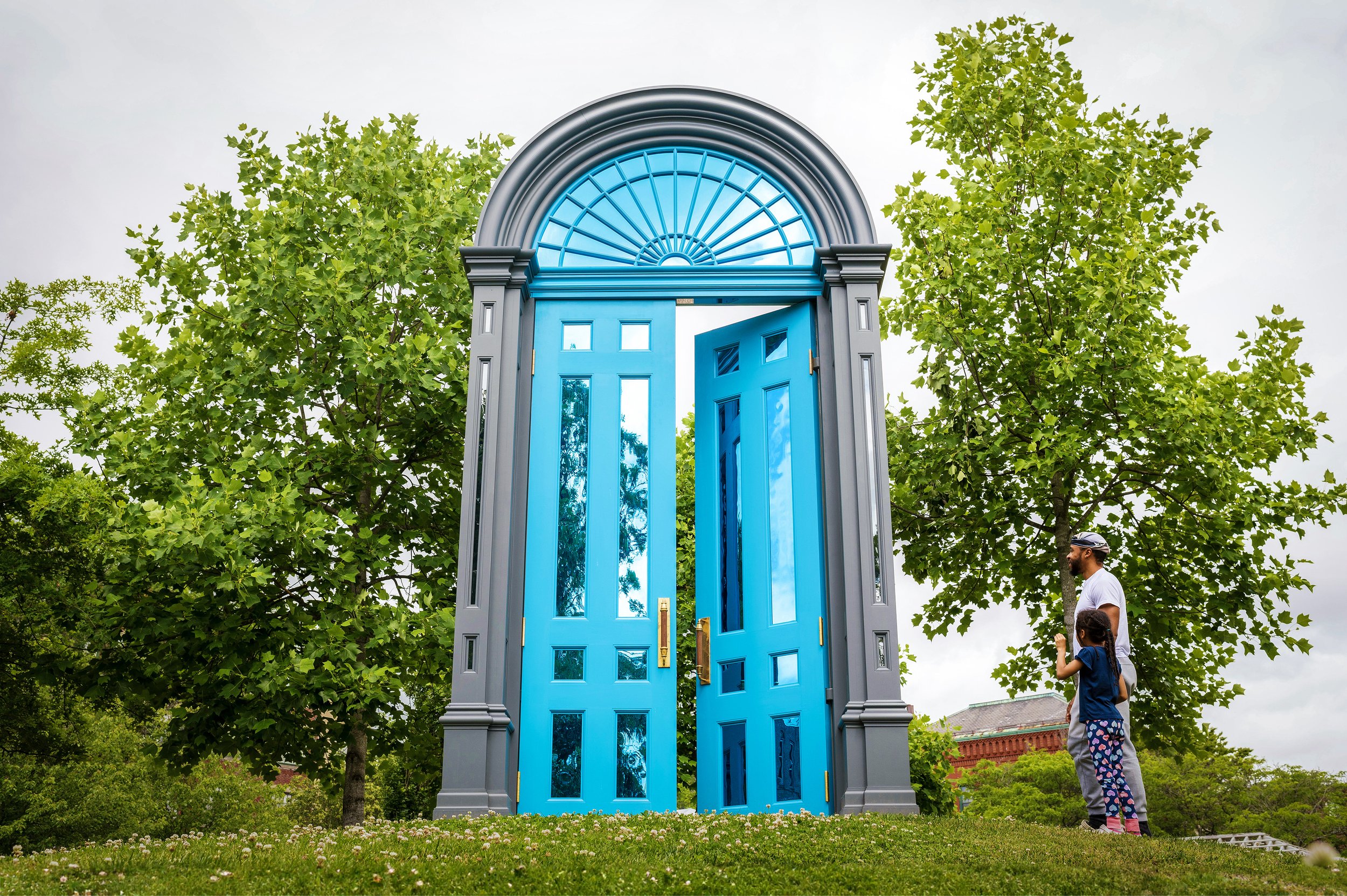
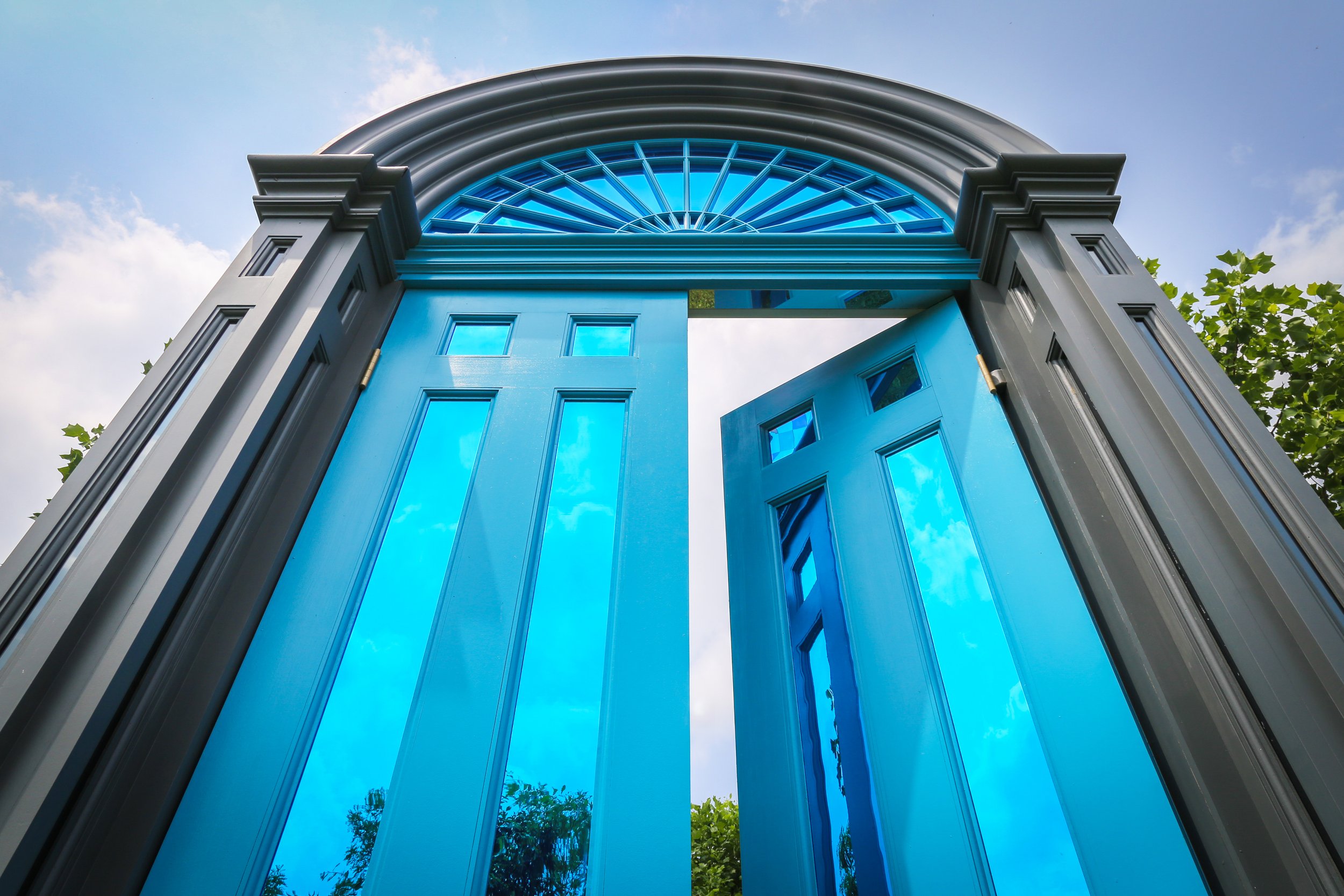
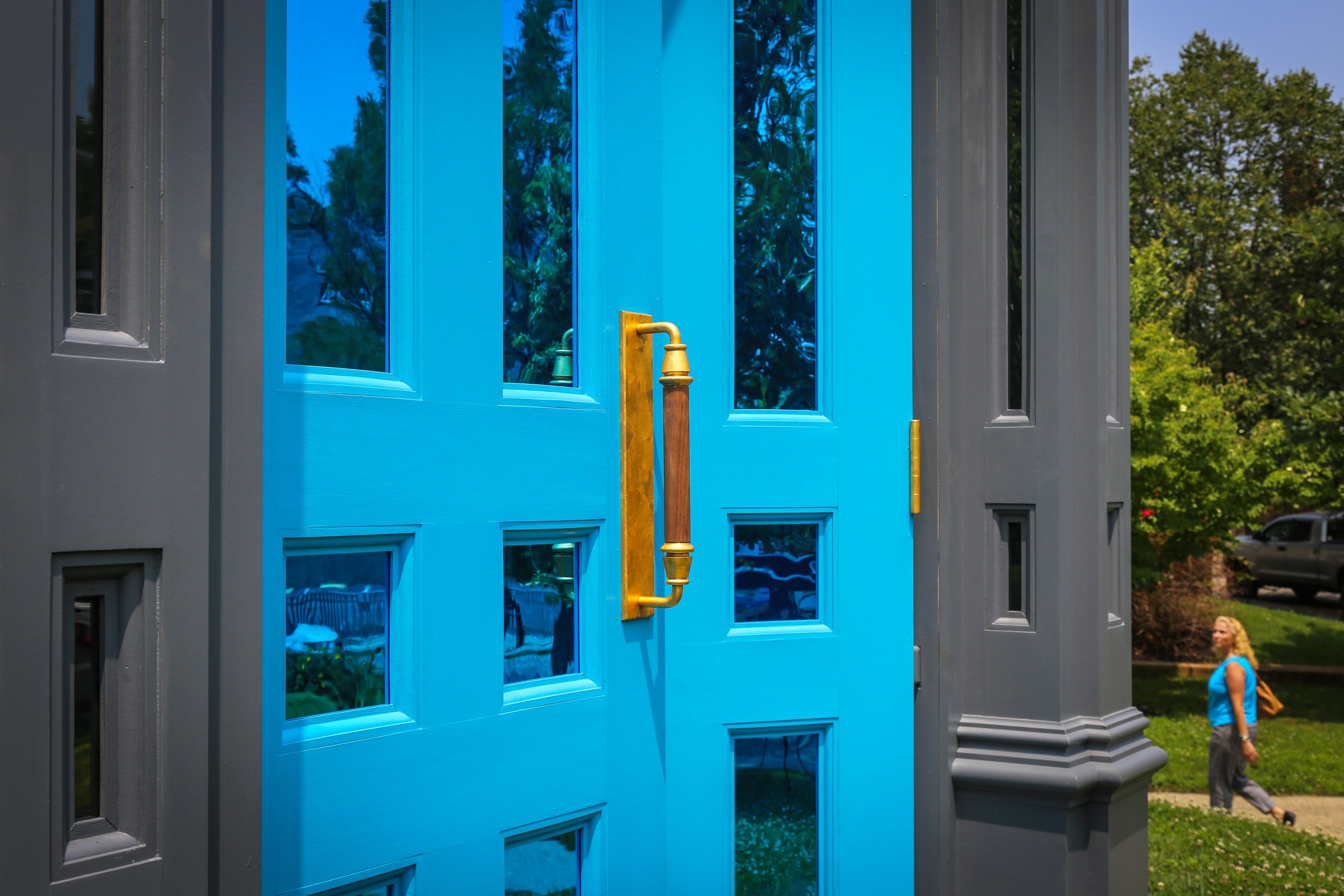
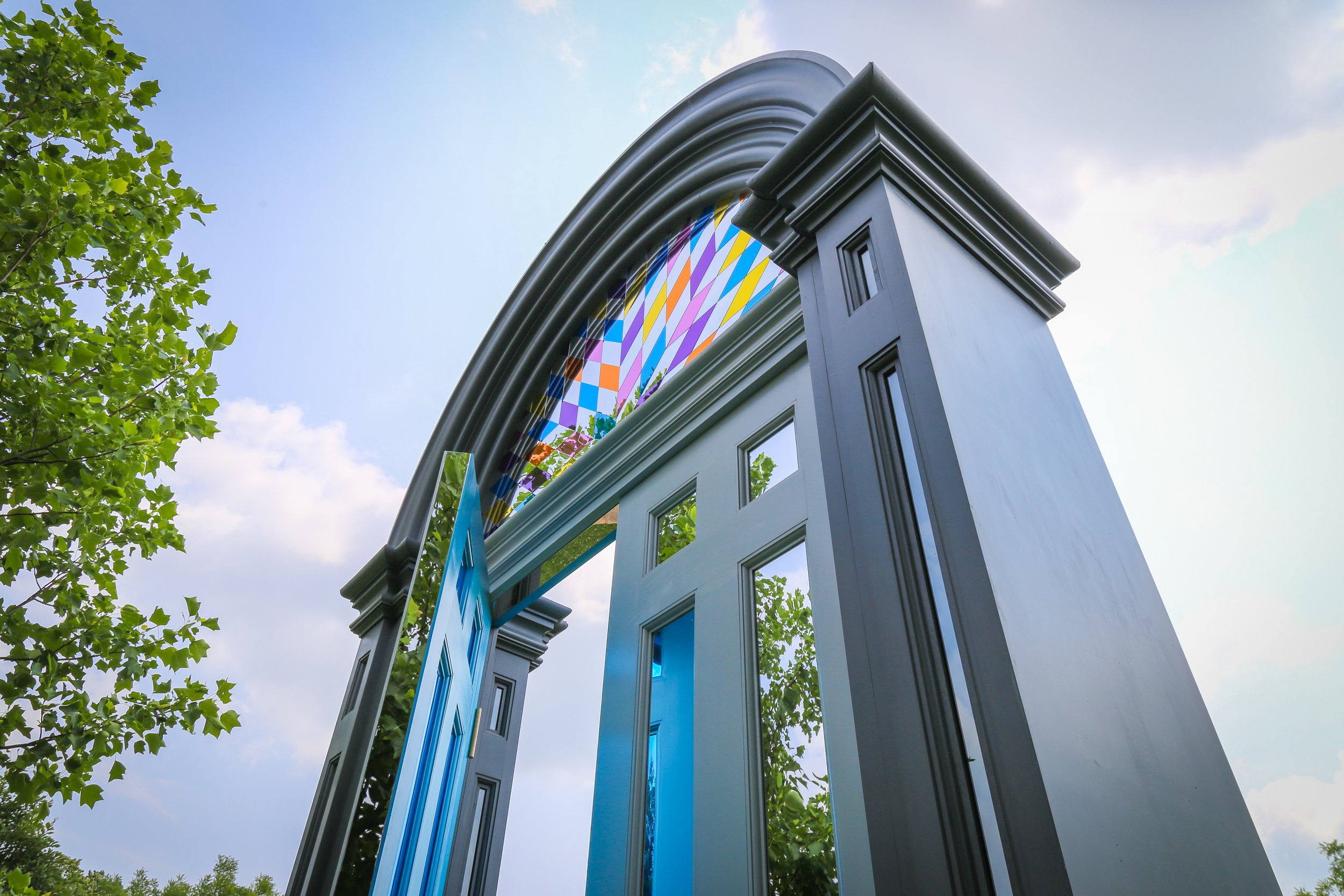
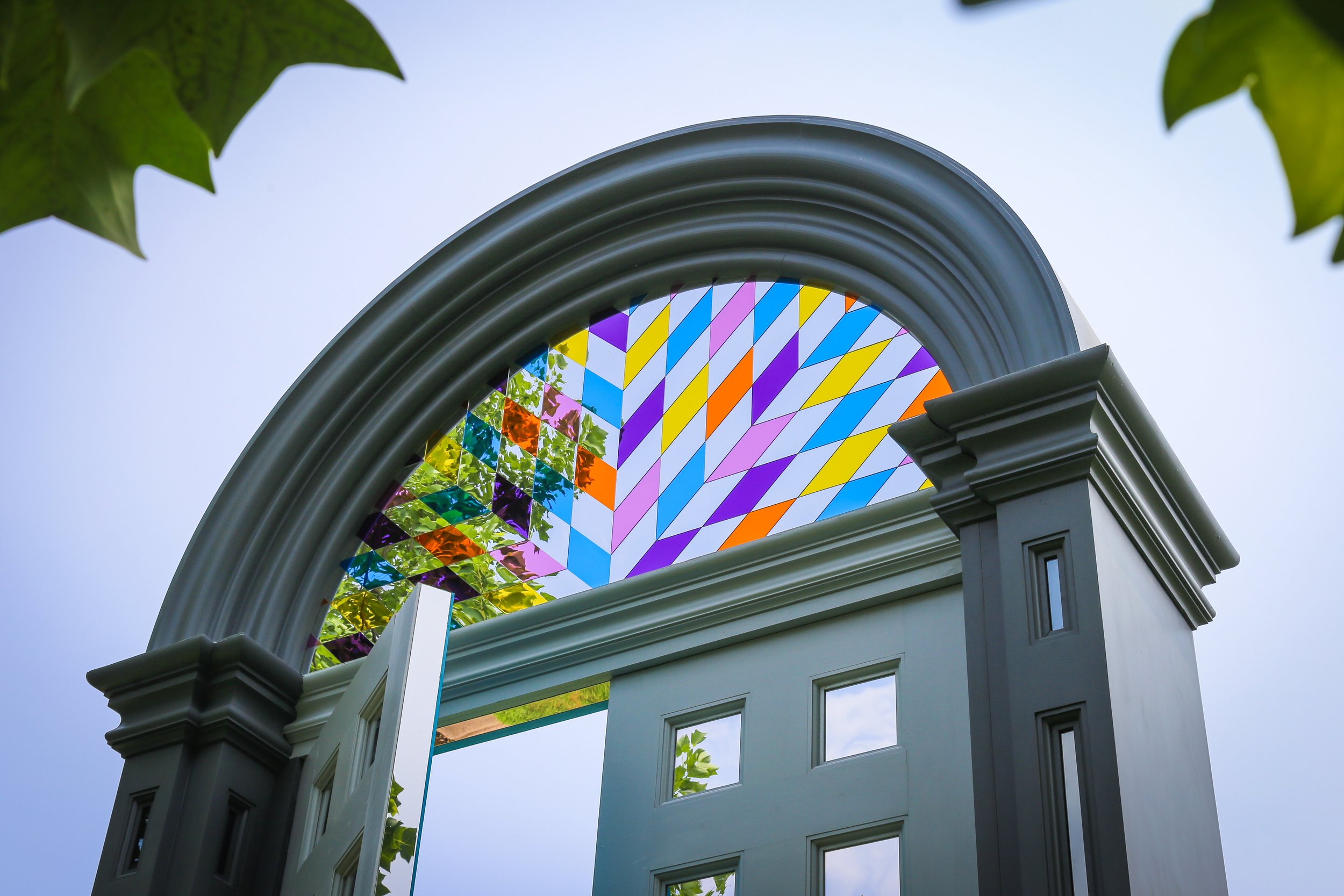
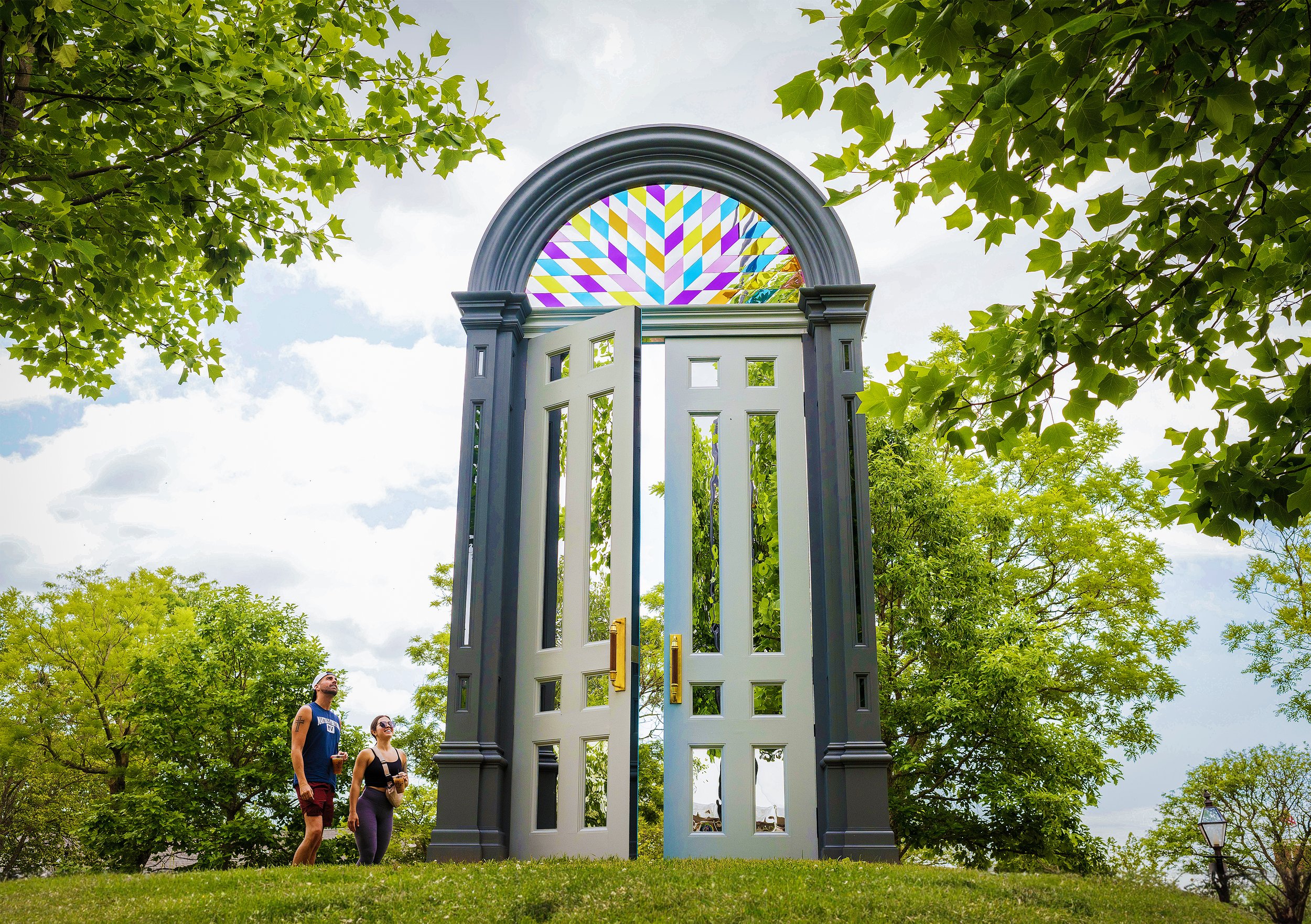
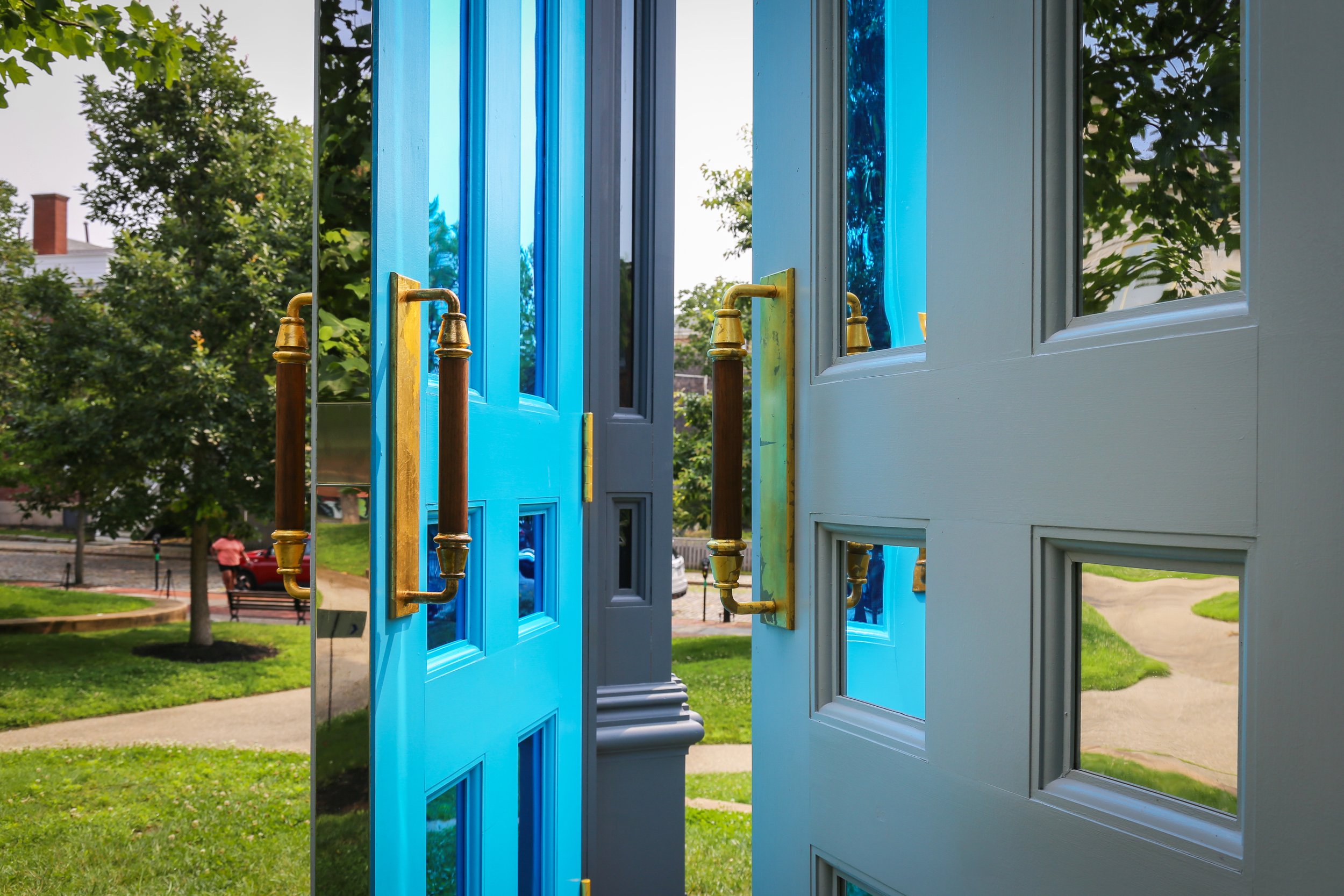
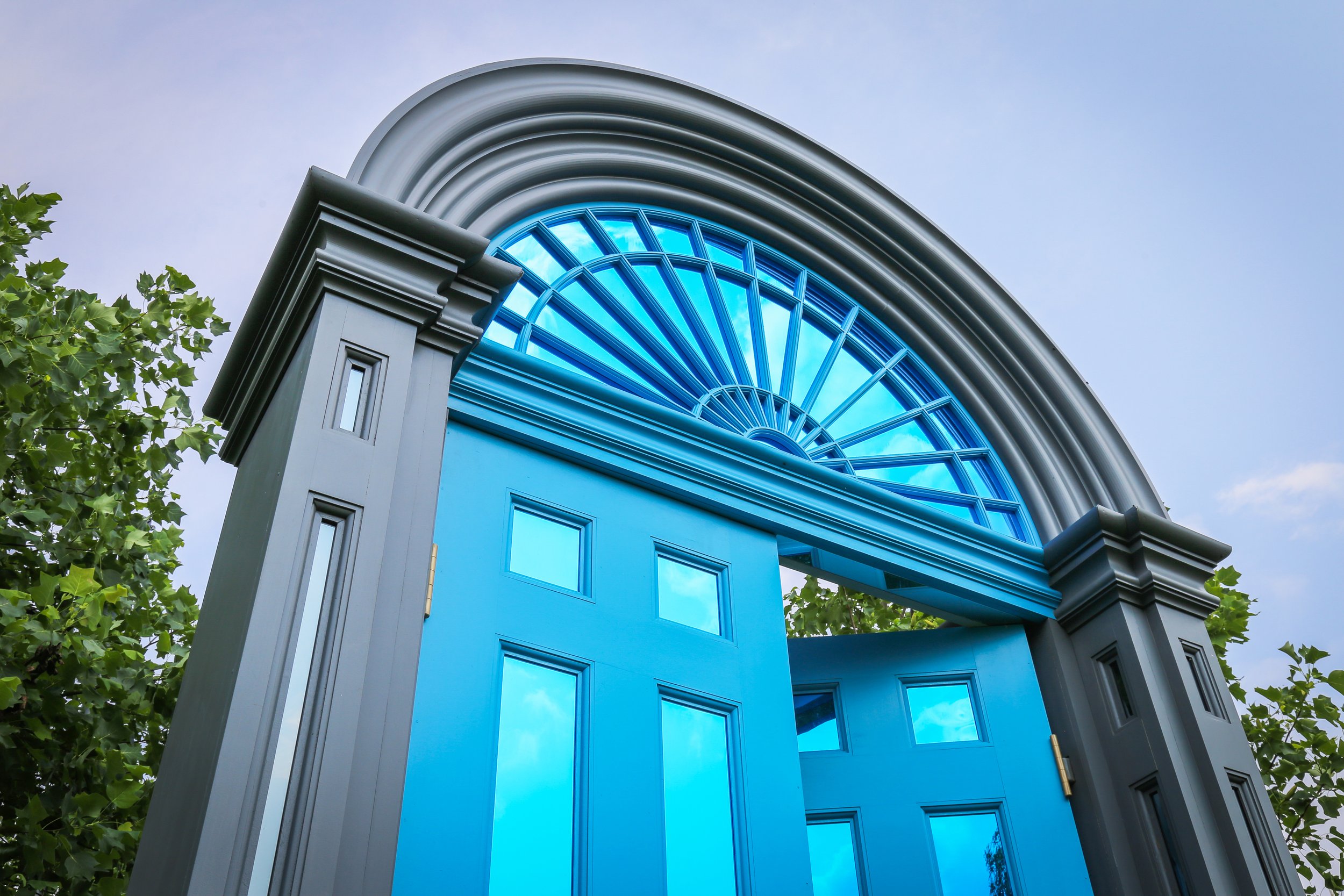
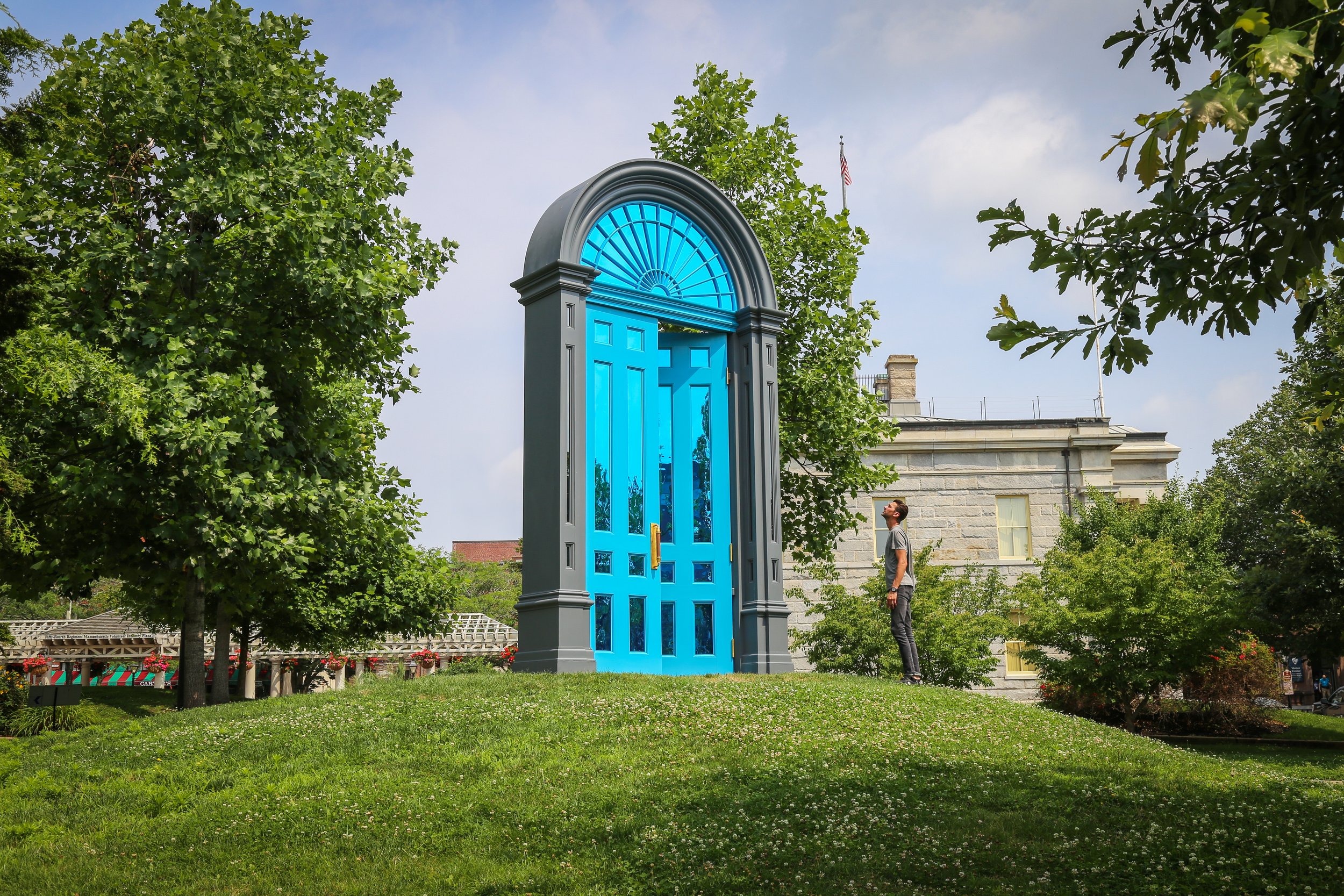
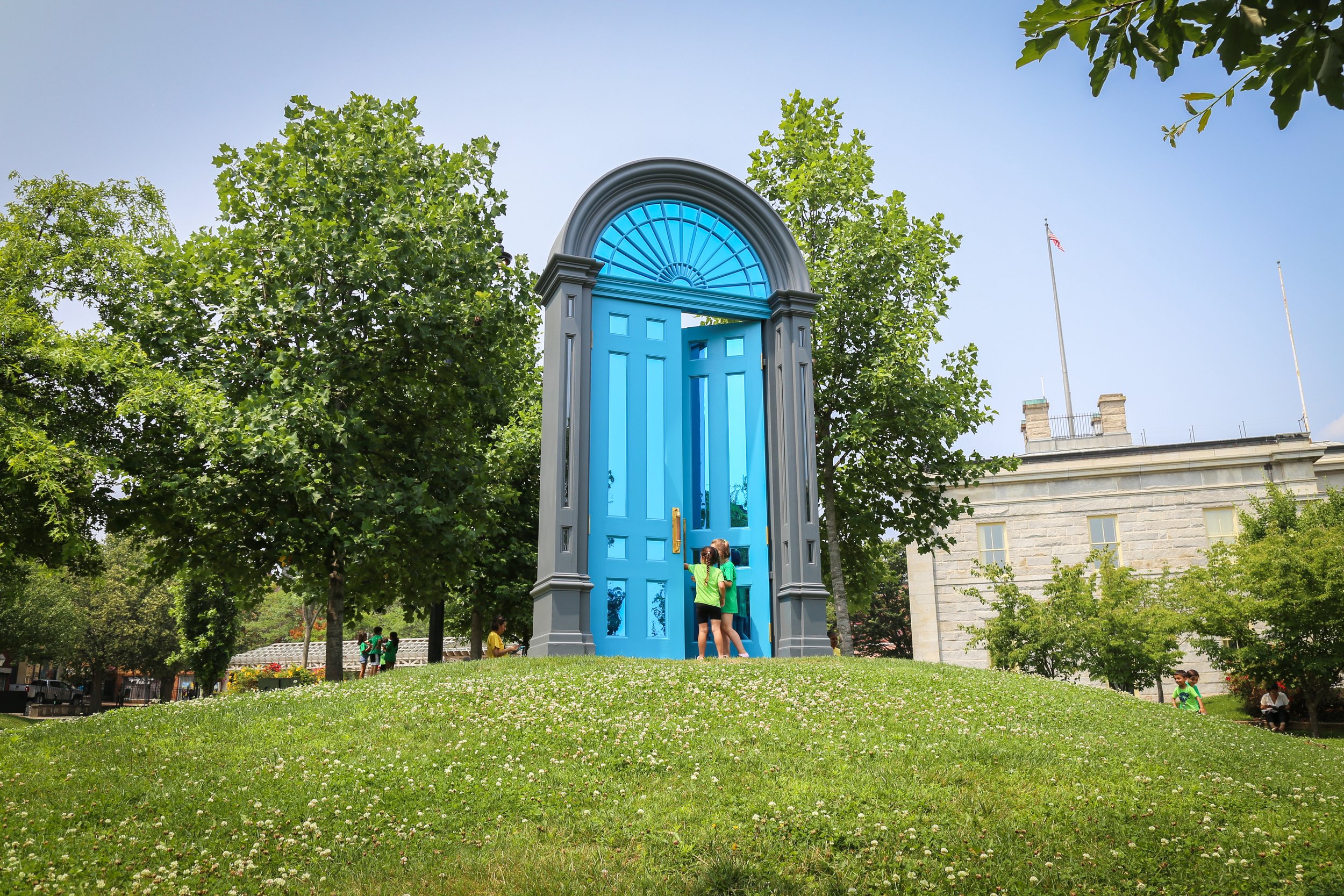

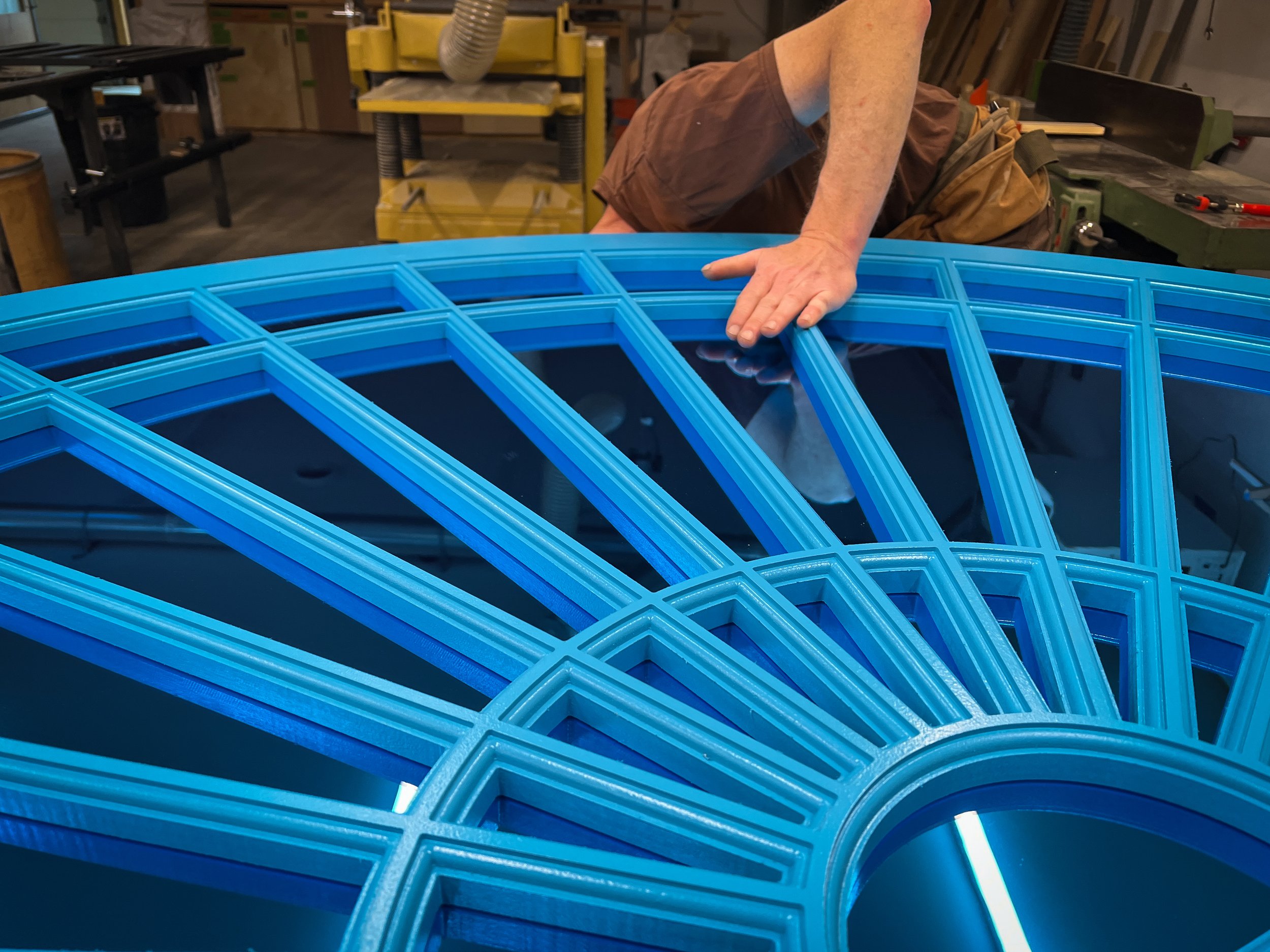
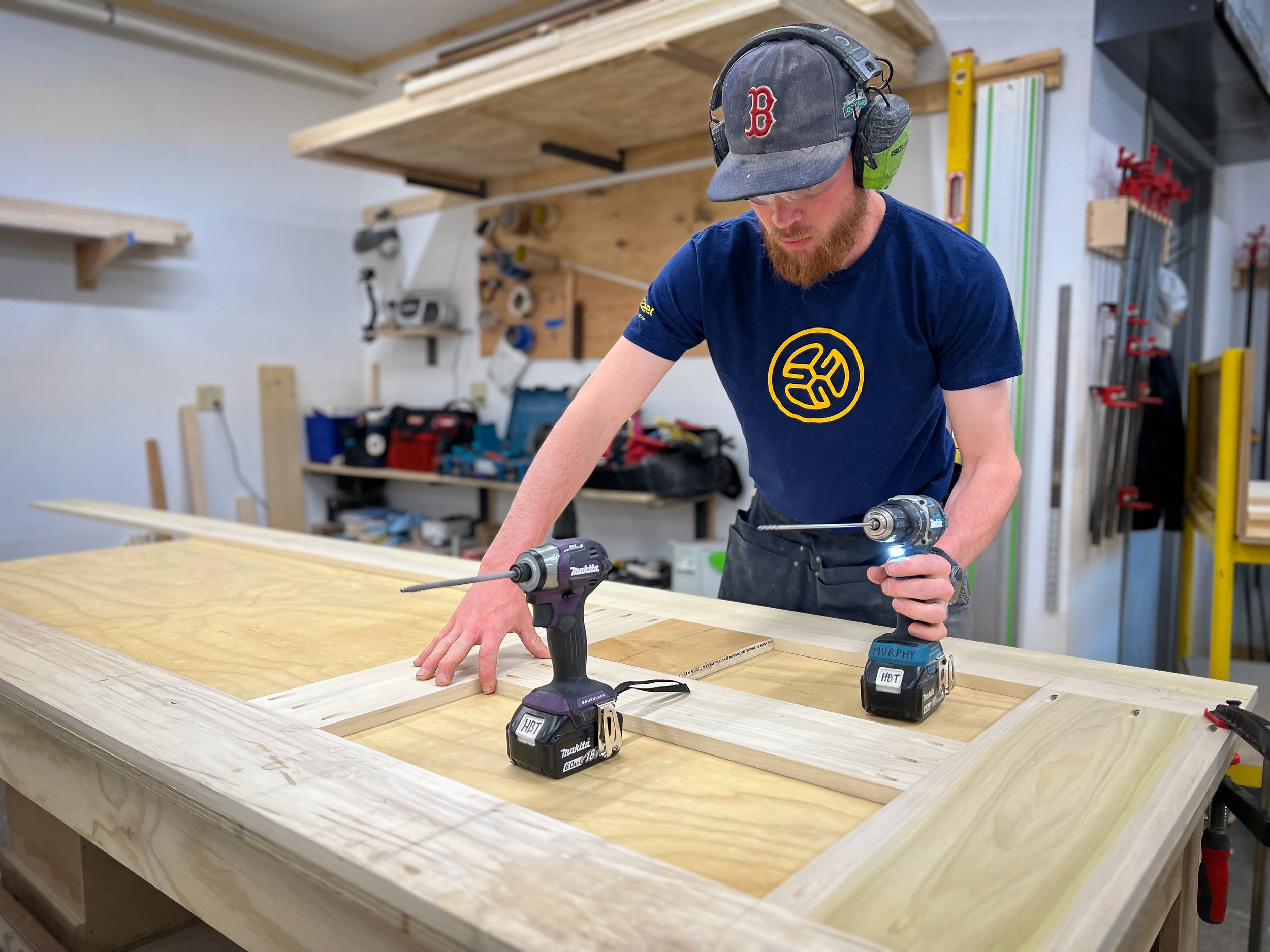
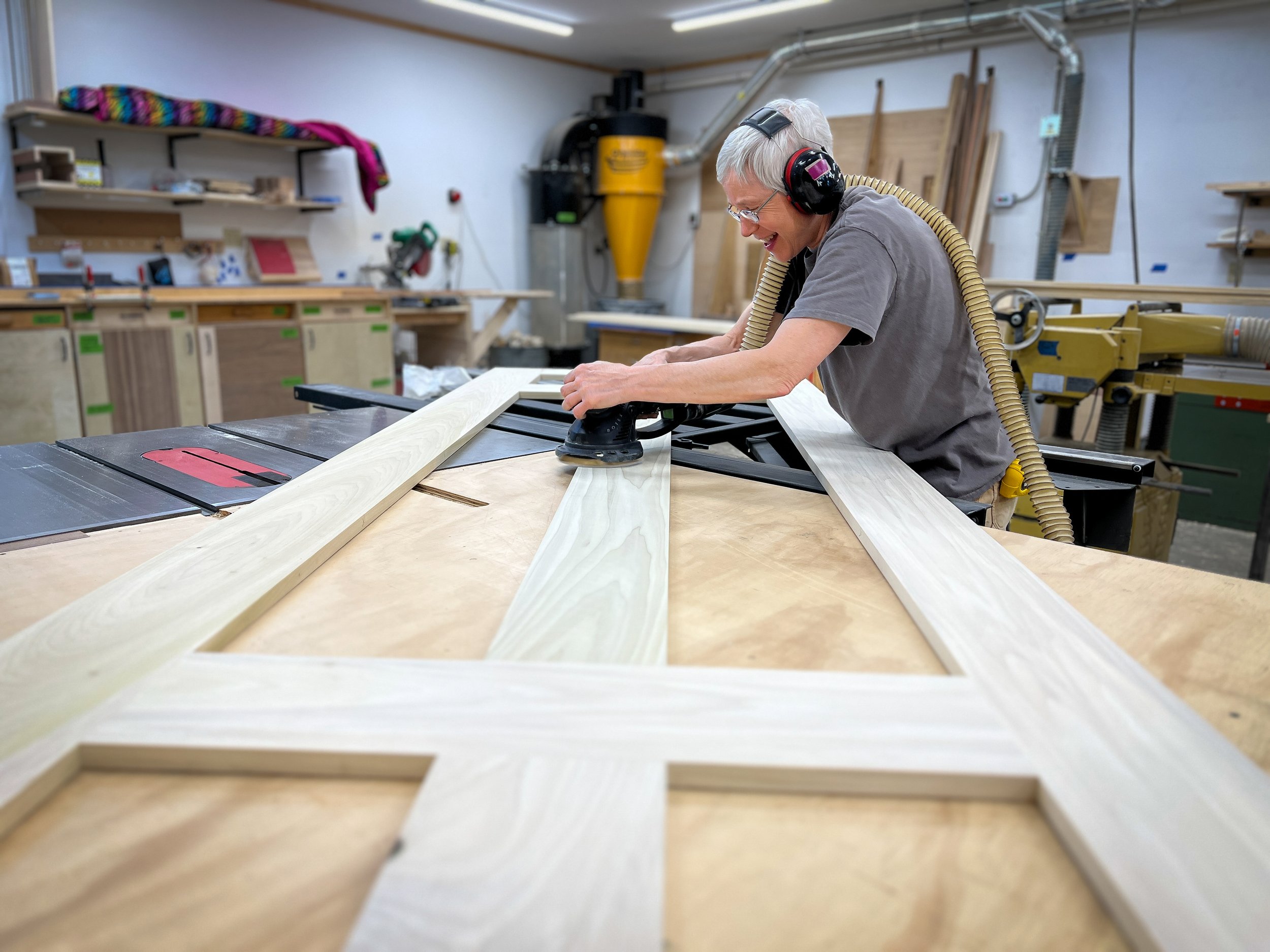
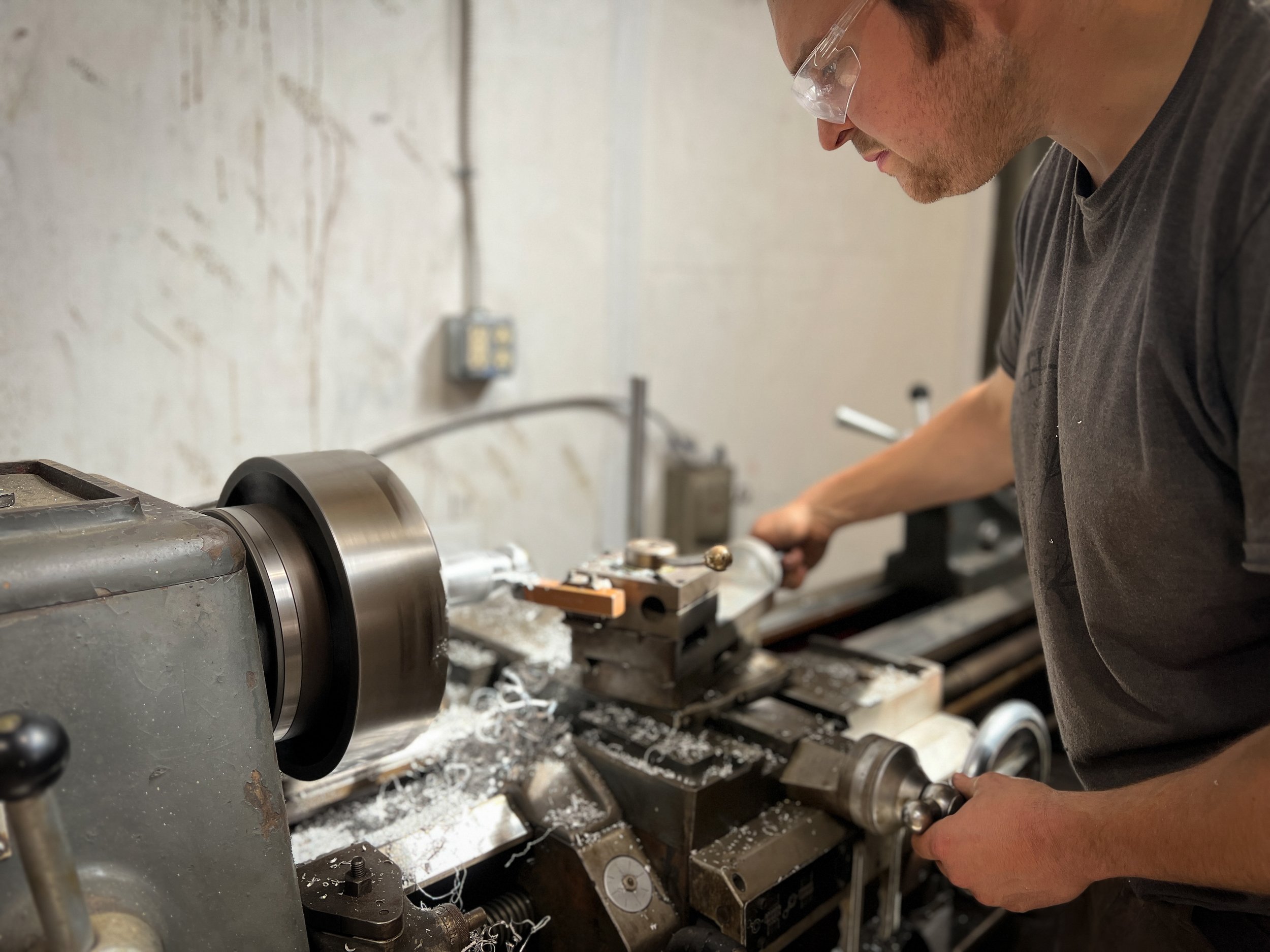

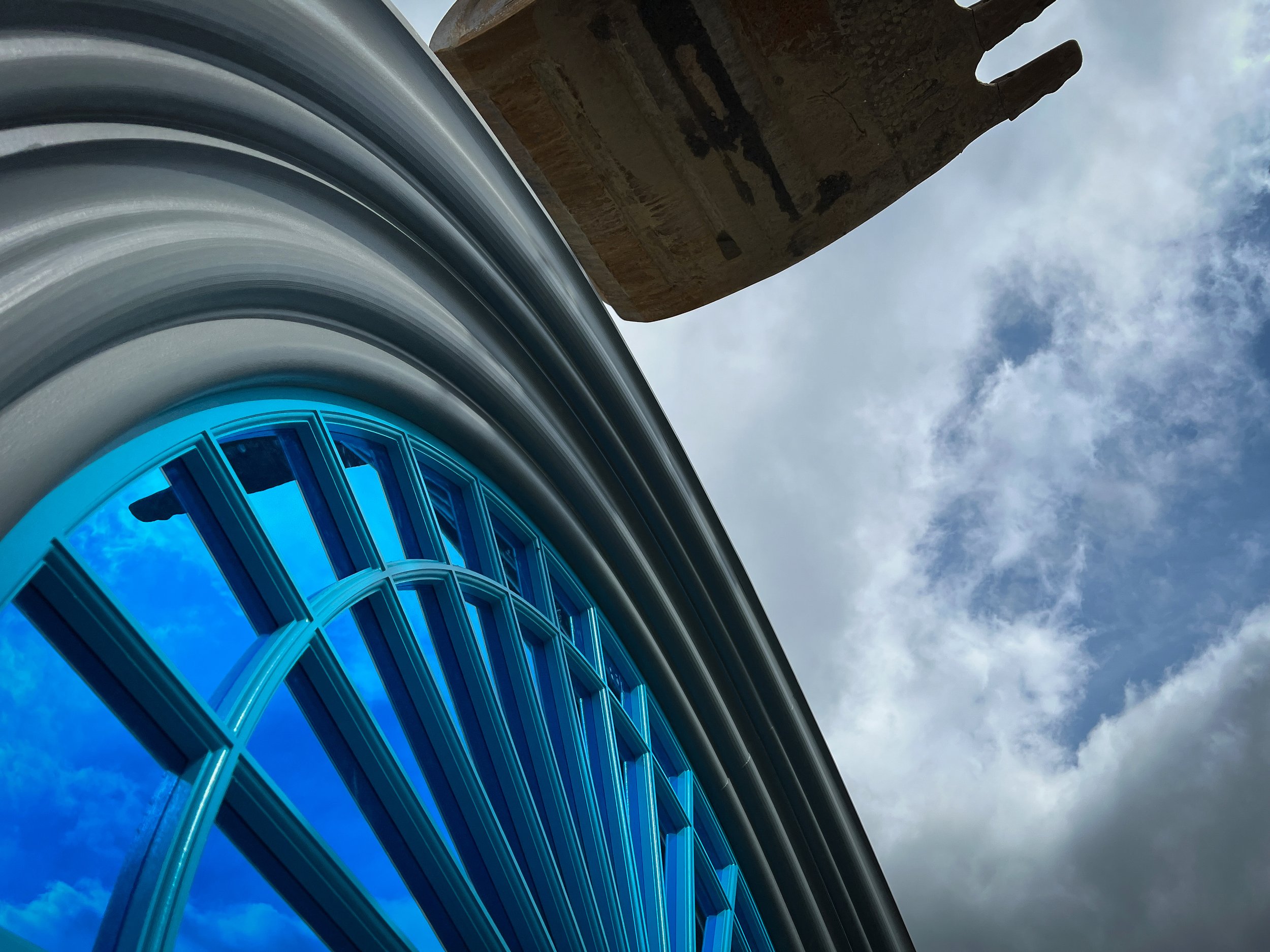
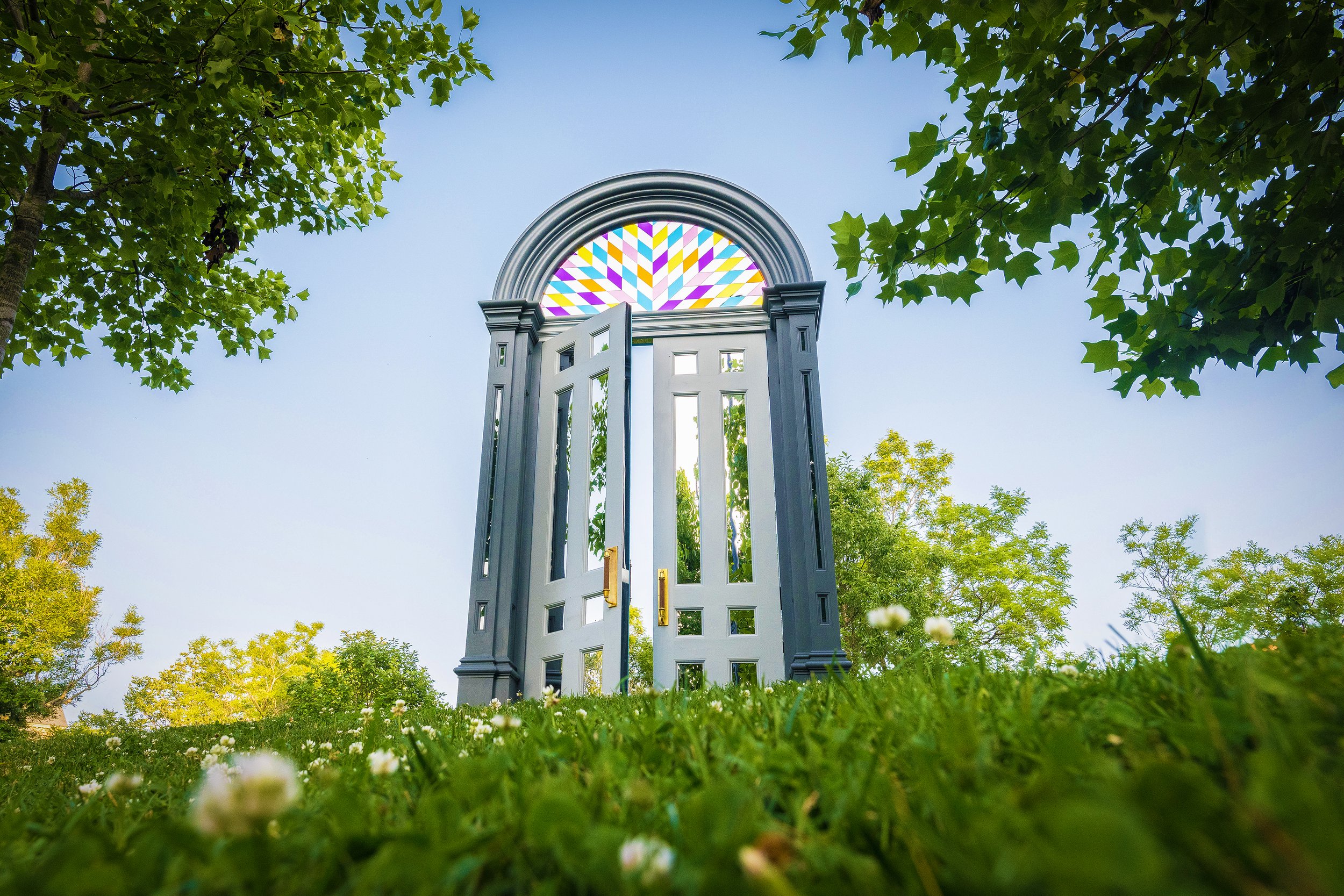
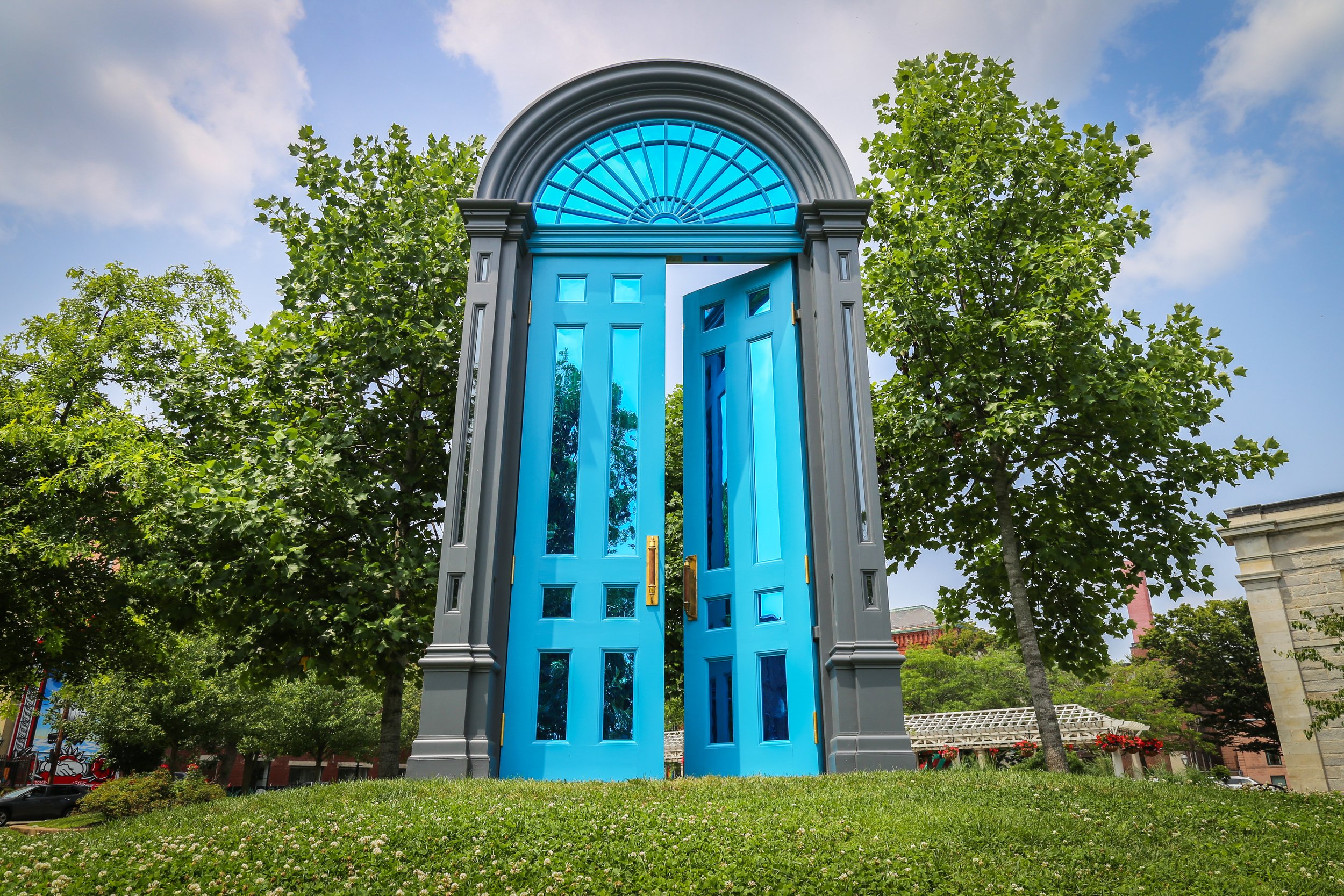
Threshold is a public artwork celebrating the principles of egalitarianism and community-building that have been integral to the history of New Bedford, Massachusetts. Inspired by the Religious Society of Friends who inhabited the city in the late 17th century, as well as the aesthetic of New England’s archetypal colonial doorways, the artwork beckons viewers toward its partially opened door, shining down on Custom House Square from its 17-foot-tall perch. Constructed mainly of steel and wood, the 17’ tall sculpture also includes colored mirrored acrylic incorporated into the facade, creating a reflective sheen and unique lighting effect. The colorful mirrored design continues as tiled patterns within the polycarbonate transom window above the doorway.
Threshold draws on the unique architecture of the federal doorway of the oldest building in Central New Bedford’s Abolition Row Historic District that has been associated with concealing self-emancipated people. The historical address additionally marks the first meetinghouse of the Society of Friends, dating back to 1785. Threshold’s double-sided door references the community’s diverse history, with its blue façade facing the Wharf and rising sun as a nod to the city’s fishing roots, while its massive arched transom window is tiled together with colorful mirrored pieces, capturing the various identities and cultures that have made up New Bedford. A suspended 8-pointed star references a hugely influential New England quilting pattern, activating the static sculpture with mirrored surfaces that encourage visitors to reflect and contemplate in and around the portal.
Threshold pays homage to New Bedford’s history as a major whaling port, as well as its historical role in abolitionism and the Underground Railroad. With its massive ornate door, the artwork seeks to promote principles of openness and create a welcoming space, inviting locals and visitors to pass through its threshold.
Fabrication: Flywheel Industrial Arts | Photography: Andrew Kepinski, Ethan de Aguiar & Mark A. Reigelman II


